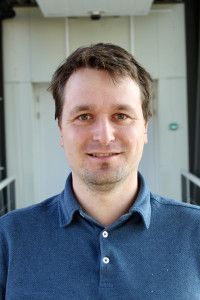Imaging scientist

Research:
My expertise combines live-cell and single-molecule imaging techniques with quantitative image analysis to visualize and measure protein dynamics. I have developed several tools to study the molecular mechanisms of DNA repair in mammalian cells using advance fluorescence microscopy, including the development of cell lines to visualize the nanoscale localization and dynamics of BRCA2 at DNA damage sites within the cell nucleus. This included development of tools for automatic image and data analysis.
In November 2024, I joined the Light Microscopy Facility at Leiden University Medical Centre and Leiden University as an imaging scientist. Here, I focus on developing reproducible image analysis workflows and supporting researchers with advanced image analysis and data management solutions.
Curriculum Vitae:
I am trained as a molecular life scientist and completed my PhD at Erasmus MC Rotterdam studying the nanoscopic organization of DNA repair proteins using super-resolution microscopy techniques. As a postdoctoral researcher in the group of Claire Wyman and Roland Kanaar, I focused on the dynamics of DNA repair proteins using single-molecule tracking microscopy. My research integrates advanced microscopy methods with molecular biology and quantitative image analysis to visualize and measure molecular processes at the subcellular level.
Paul MW, Aaron J, Wait E, van Genderen RM, Tyagi A, Kabbech H, Smal I, Chew TL, Kanaar R, Wyan C
Nucleic Acids Res. 2024. DOI: 10.1093/nar/gkae559
Slotman JA, Paul MW, Carofiglio F, de Gruiter HM, Vergroesen T, Koornneef L, van Cappellen WA, Houtsmuller AB, Baarends WM
PLoS Genet. 2020. DOI: 10.1371/journal.pgen.1008595
Arts M, Smal I, Paul MW, Wyman C, Meijering E
Sci Rep. 2019. DOI: 10.1038/s41598-019-53663-8
Looking for information on one of our topics, a new place to conduct your research or experienced research to join forces with? Feel free to contact us.!